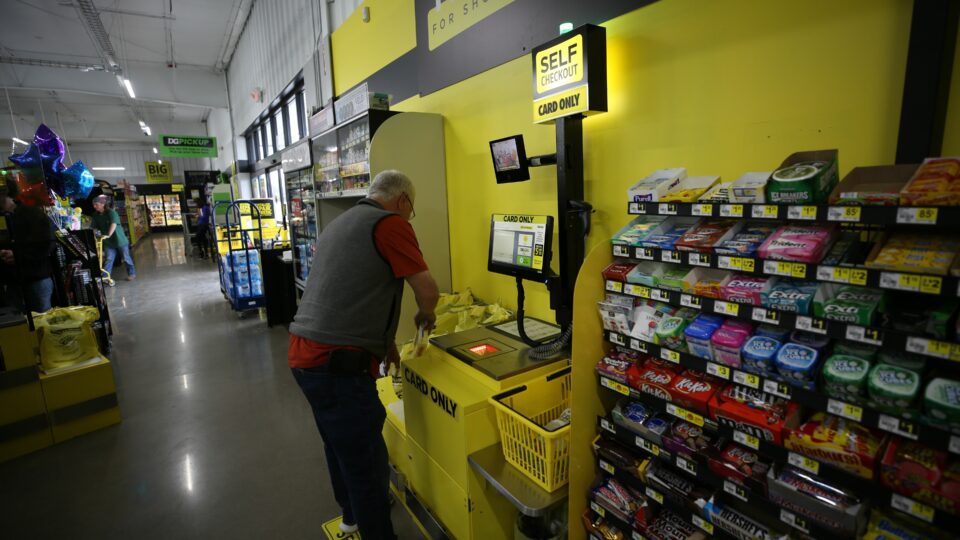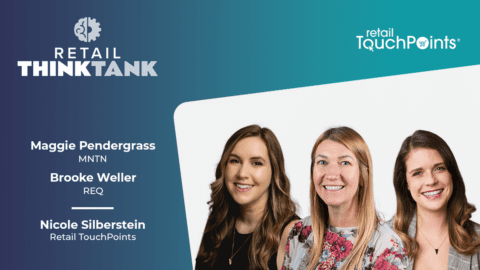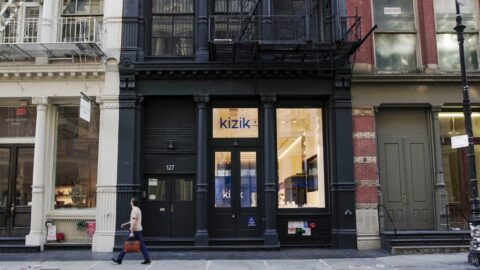This is the first part of our two-part series, “From Self-Checkout to Just Walk Out: A Look at Autonomous Retail Experiences.” In part one we go beyond the headlines to uncover the reality of the self-checkout situation. Part two will examine the feasibility of more autonomous checkout solutions, including Just Walk Out-style tech and smart carts.
Headlines like “Self-Checkout is a Failed Experiment” and “Why Retailers are Losing Faith in Self-Checkout” have been plentiful these past few months, along with story after story of big-name retailers like Target, Walmart, Dollar General and Costco “ditching” the tech. It’s been a veritable tsunami of bad press for self-checkout, and honestly, it’s not all that surprising — after all, consumers have long complained about the finicky machines, which often don’t work and, even when they do, make many customers feel like they’re doing the retailer’s job for them.
What’s a bit more surprising has been the recent retailer about-face, because the fact is, self-checkout is largely a win for retailers: It helps with one of retailers’ biggest and most persistent challenges — labor — and has been shown to dramatically cut transaction time, thereby increasing throughput. Plus, despite all the vocal naysayers, many consumers actually like the technology.
Another key truth is the small factor of sunk costs. One self-checkout kiosk can run as much as $30,000 to install, and a study by the Food Industry Association found that 96% of the food industry retailers it surveyed offer self-checkout — meaning that self-checkout is unlikely to disappear from stores anytime soon.
Advertisement
Self-Checkout’s Shrink Problem Outweighed by Labor Benefits
In citing their reasons for pulling back on the tech, almost every retailer painted shrink as the culprit. And it’s likely true — research from Grabango found that self-checkout systems can have as much as 16X more shrink than traditional cashier lanes — but that’s not the whole story.
Yes, self-checkout machines, as they operate today, may offer more opportunities to accidentally, or intentionally, make off with extra products or pay less than what is owed. But it’s also true that many of the retailers that have made headlines lately aren’t doing away with self-checkout, they’re simply making adjustments to mitigate this risk:
- Target and Schnucks are keeping the tech but limiting the number of items customers can check out with;
- Five Below is reducing, but not eliminating, the number of self-checkout lanes and adding more staff for oversight;
- Costco also is adding more humans to self-checkout areas, primarily to verify people aren’t sharing memberships; and
- Dollar General is eliminating the machines in 300 of its stores, but with a store count of nearly 19,000 that’s a drop in the bucket (and if any retailer needs to address labor challenges while keeping costs down, it’s DG).
At the same time, Aldi, which is rapidly expanding across the U.S. is testing out an advanced version of the tech with an eye to future expansion. And Walmart, which made headlines for removing self-checkout from some of its stores (a total of five stores so far across a footprint of more than 4,500), also has recently added self-checkout ads to its slate of retail media offerings. Given what a cash cow retail media has been for Walmart, this newest addition to its advertising roster doesn’t foretell a widespread self-checkout withdrawal — in fact, quite the opposite.
“Retail has had such a tight labor market for so long, which is one of the reasons retailers pivoted to store automation like self-checkouts [SCO] to begin with,” said Sandeep Unni, Senior Director and Retail Analyst in Gartner’s Research and Advisory practice in an interview with Retail TouchPoints. “Retailers are caught between a rock and a hard place. Labor continues to be expensive and there are still high levels of attrition — we did a frontline study at Gartner [in 2023] and something like 54% of frontline workers quit after the first three months in the job. With those kinds of churn rates, it’s impossible to have adequate staffing in the store. So I can’t imagine this [pullback on self-checkout] would be a structural change. Certainly the heightened sensitivity and hype right now around theft and OCR [organized retail crime] has swayed retailers to some extent in their SCO strategies, but longer term it remains to be seen if that will have a dent on broader adoption.”
As the CEO of Ahold Delhaize (owner of Food Lion, Giant and Stop & Shop, and one of the largest retailers in the U.S.) told Fortune: The “savings on labor costs [offered by self-checkout] are higher than the potential downsides.”
That is the bottom line, and in retail, especially grocery — where self-checkout is most prominent and the margins are razor-thin — it’s all about the bottom line. So while consumers may grumble and retailers may make noise about cracking down in the name of theft, self-checkout is here to stay. But, of course, that doesn’t mean it can’t get better.
Tech to the Rescue: Improving Self-Checkout
It may not seem like it, since widespread usage of self-checkout didn’t really take off until the pandemic, but the tech has been around and in stores since the late ’80s. And just like most tech, it has improved and evolved over that time.
Among consumers’ many complaints are the complication and delays when checking out non-barcoded items like produce or age-restricted products like alcohol or tobacco, but Unni said that new advances with computer vision tech and product recognition are helping reduce that friction.
“If you’re in a grocery store and you have a loose bag of apples, the computer vision is able to at least narrow it down to a couple of different types, for example, Fuji versus Granny Smith, as opposed to having to start from scratch and manually type in what you have,” explained Unni. “And in many cases, it can actually recognize [the item] directly and then couple that with a weight scale at the bottom of the checkout plane if it needs to be weighed.”
In fact, the new self-checkout solution that Aldi is testing in a Chicago store uses computer vision to provide what partner Grabango describes as a “checkout-free” experience where customers don’t need to scan items at all.
Advancements in payment tech also will eventually streamline the self-checkout experience for shoppers. “I think biometrics are going to play an important role in terms of delivering authentication and understanding who the customer is,” said Peter Stewart, EVP and Managing Director of North America at payment acceptance solution Ingenico in an interview with Retail TouchPoints. “But biometrics are just like any technology. From a scale perspective there are various sensor technologies that need to become more mainstream and optimized, so there’s a long way to go [before biometric payments become commonplace].”
These same technologies also can help address retailers’ primary concern — shrink. With the addition of new enhancements like computer vision, self-checkout “becomes one of the ways where tech can actually help with reducing theft, by detecting ‘red actor’ versus ‘green actor’ behavior as they’re scanning,” said Unni. “For example, substitution or scan avoidance scenarios, which are quite common [in self-checkout]. Even on manned lanes these technologies can detect things like ‘sweethearting,’ where you choose not to scan items or scan in a lower-cost variety of something when you have friends and family behind the counter. The ability to recognize these behaviors in real time can aid with detecting these fraudulent behaviors, both on the employee and the customer side.”
In fact, as part of its self-checkout revamp, Target is reportedly also using TruScan, an audiovisual tool that detects the items customers are scanning and alerts them if they’ve forgotten to scan something.
Humans are Still Essential to Self-Checkout Success
One thing has become very clear over the last 30+ years of self-checkout experiences — while these solutions can certainly help retailers with labor challenges, humans are still essential to the store experience.
“Let’s face it, tech can only take it so far,” said Unni. “You need to have some store processes in place as well. For example, I’m a Wegmans shopper, but Wegmans doesn’t have any audit steps in place at all [at self-checkout]. Then contrast that with a retailer like Costco, which for years has had an audit at the front of the store. The tech needs to be complemented by other tactics in the store, like oversight and audits. If you do have SCO lanes, you need to have adequate staffing at the front of the store to support it. You don’t need as many dedicated associates as you’d have in manned lanes, but you still need to have some labor.”
It’s a fair point, although we can’t help but point out that even the wholesale clubs, where receipt checks are commonplace, are looking to technology to help with the task. For example, Costco competitor Sam’s Club is currently trialing computer-vision enabled tech that will speed up that final audit at the store exit.
Which is why the future will likely be marked by hybrid experiences, said Stewart: “The large retailers that we work with are, for the most part, continuing with a strategy that balances cashier-driven lanes and self-checkout, and I don’t [foresee] the retail industry moving away from that. The labor shortage in retail is not as acute as it was 18 months or two years ago, but there’s still high turnover and it’s still a challenge for retailers to have the right levels of staffing at the right times. And their profitability is under some pressure, so if they can find ways to extract some savings, they’re going to continue to do that.”






















